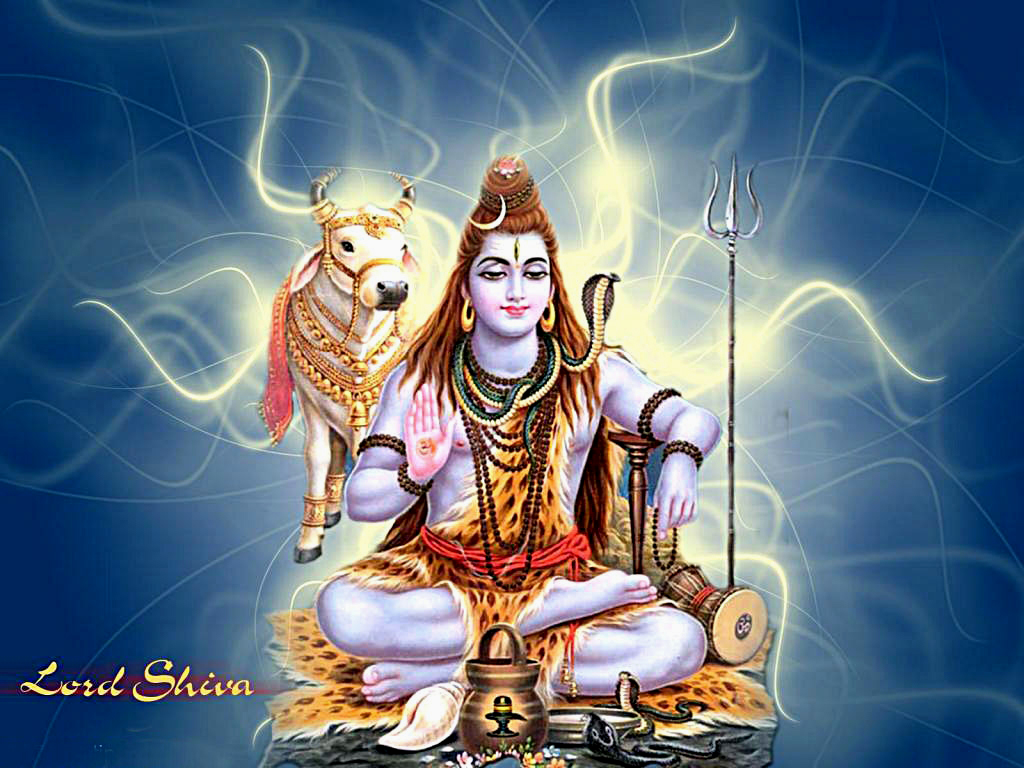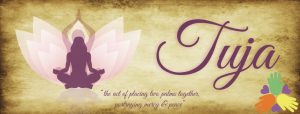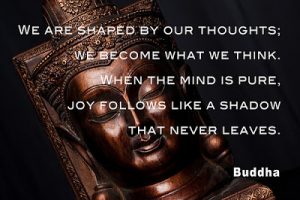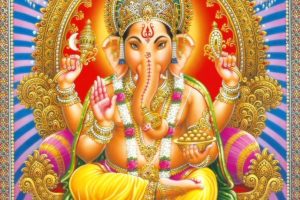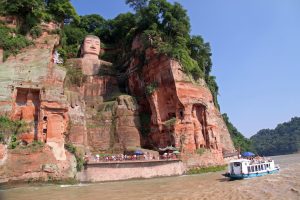An image or an aspect of Shiva’s person
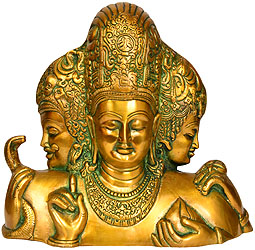
The question ‘Is Shiva’s manifestation as Nataraja an aspect of Shiva’s person or just one of the types of his image in art or worship tradition’ has always haunted the minds of thinkers. As for art critics they have invariably confined themselves to his various manifestations as reveal in his iconographic forms – image-type, and there ends their quest. Contrarily metaphysicians and theologians perceived his form as it manifested in the Upanishads and Puranas. They perceived him as representing one of the ‘Tri-murti’ – three forms or functional aspects of God, namely, creation, preservation and dissolution, that is, bringing the cosmos into existence, sustaining it and finally withdrawing it. Lord Shiva was seen as representing the last of these three aspects, that is, dissolution. Prajapati, or Brahma, and Vishnu were seen as representing other two aspects, creation and preservation. In some contexts the Rig-Veda mentioned Prajapati and Brahma as two independent gods but sometimes also as two names of the Creator. Hence, they were often seen as representing one and the same functional aspect of God.
Article Source: http://www.exoticindiaart.com/article/dance-of-shiva/
Shiva in Vedic literature
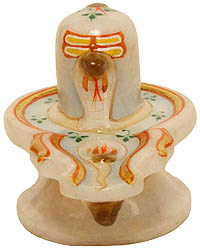
The Shiva-related worship tradition showed two trends. Under one, Shiva was seen as ‘ling’ – his aniconic manifestation;
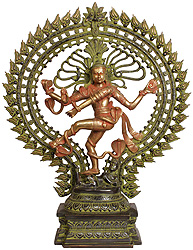
and, under the other, he was seen and worshipped with a very wide range of imagery Nataraja being one of such forms.
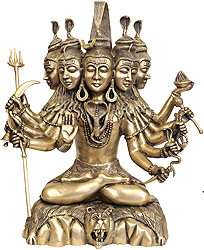
He was seen as Sadashiva, One beyond time and beyond ‘kalpa’ – the scheduled tenure of the Creation, that is, time that spanned everything – manifest or unmanifest, was not Shiva’s measuring scale.
In Indian cosmological tabulation Shiva’s life-span is double of Vishnu, and Vishnu’s, double of Brahma. Thus, in one kalpa Brahma emerges twice, Vishnu’s tenure ends with every kalpa; Shiva has tenure beyond kalpa.
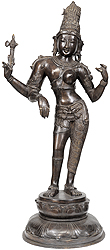
The underlying mystic vein effectively working in the Shaivite worship cult saw Shiva as seed – the root of all things and all beings, male or female, and this gave to his visual image, both in art as well as to enshrine a sanctum a new image form known as Ardhanarishvara – half male and half female. The mystics contended that it was after Shiva split that there came forth both life and matter – ‘pran’ and ‘bhuta’. The Rig-Veda proclaimed in one of the Suktas ‘he (the Rig-Veda does not link this ‘he’ with Shiva but generalizes it) is as much male, as the female’. The ‘Advaita’ philosophy also contends that the entire Creation is just the extension of One.
All forms of dance initiated
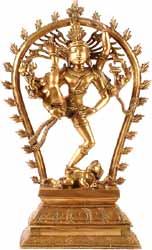
Expressive of two basic tendencies of mind – wrathfulness and delight to include amour and enjoyment of beauty, dance was later classified as ‘tandava’ and ‘lasya; that is, what revealed wrath was classified as ‘tandava’, and that which revealed delight, also amour, ‘lasya’, ‘tandava’ revealing destructive mood, and ‘lasya’, creative. Theologians contend that dance is Shiva’s instrument for both, to create and to dissolve. They hold that his body wrathfully whirled as in dance when he destroyed Tripura – the cluster of three cities sheltering three demon brothers.
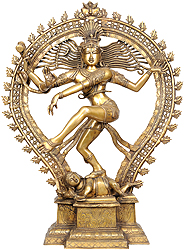
They also contend that immenseness of his ire was absolute when in it the entire universe dissolved. Thus, immensity of wrath determined the class of ‘tandava’, if it was the dance of dissolution or the dance that destroyed an individual or some particular object. Shiva resorted to a dance form similar to ‘anandatandava’ also when destroying elephant demon Gaya, demon Andhaka and when accomplishing Trailokyavijaya – victory of three worlds.
In similar vein metaphysicians hold that universe, his manifestation, creation and dissolution, wherever occurring, occur in him. If a leaf falls and decomposes, it is he who decays, and if a new shoot bursts, it is he who re-emerges. It is he who effects creation as also dissolution and is yet above both.
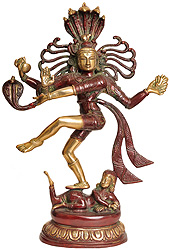
Thus, unlike a conceptual deity-image for sanctum an image of Shiva engaged in dance, despite that it also involves a lot of symbolism and is highly artistic, portrays an essential aspect of his being. Dance illustrates one of the ever-first cosmic acts with which Shiva seems to have tamed violent motion and separated from it rhythm, moves that communicated emotions and states of mind – human mind and the cosmic, and disciplined and defined pace. Cosmos emerged with roaring horizons, tempestuous winds, turbulent oceans, rocking mountains and moving earths. Shiva arrested their unruliness into his limbs and noises into the beats of his drum.
His feet re-cast the unruly skies and violent waters, and all their cries and commotion. Thus, unruly sounds were set to syllabic discipline, and cosmic disorder, having been reduced to measured pace, was transformed into ordered movement. A man of stage from his body gestures and movements he revealed, and perhaps guided how to reveal, different emotions and states of mind. He danced in delight as also to destroy. Thus in his case neither a dance-image nor any is an artistic manipulation or just an image for sanctum. Each of his images represents one of his aspects, an aspect of mind but more truly that of the flesh.
Dimensions of tandava and lasya manifesting in Shiva
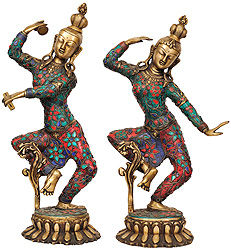
Shaivite thought – metaphysical as well as devotional, abounds in numerous myths of dance performed by Shiva and his consort Devi in her various manifestations.
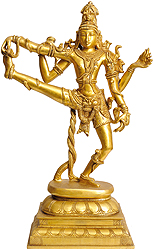
Unlike Vishnu who resorted to dance for accomplishing a contemplated objective, Shiva has been conceived more or less as a regular dancer performing for accomplishing an objective as also for pure aesthetic delight. The tradition hence reveres him, besides as ‘Adi-nratya-guru’ – the originator and the first teacher of dance, also as Natesh or Nataraja – the king of dance.
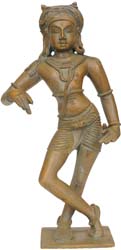
In him revealed both faces of dance – ‘lasya’ as well as ‘tandava’, of which all subsequent dance forms were offshoots. ‘Lasya’, the dance of aesthetic delight revealed beauty, grace, love and all tender aspects of existence. ‘Lasya’ is the mode that defined many of Shiva’s iconographic forms – Kalyana-Sundara, Vrashavahana,
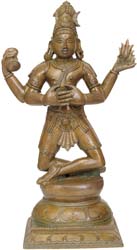
Yogeshvara,
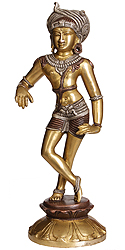
Katyavalambita,
Sukhasanamurti, Chinamudra, Anugrahamurti, and Chandrashekhara.
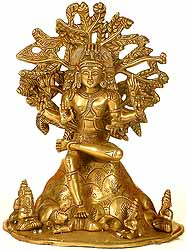
Vyakhyanamurti
Chinamudra, Anugrahamurti, and Chandrashekhara.
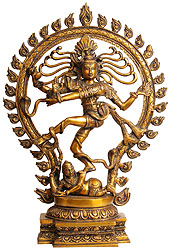
‘Tandava’ – more correctly ‘ananda-tandava’, was the dance of absolute bliss, for after the Great Age had ended and dissolution had become imperative, He – the Great Shiva, Who alone remained to effect ‘re-birth’ of life on the cosmos, danced in absolute bliss over the head of dissolution. In visual arts dissolution has been represented as Apasmarapurusha, the demon of forgetfulness and darkness, which prevailed after dissolution. Sound, which vibrated the space – the first of the five elements – the basic constituents of creation, fire, the symbol of final conflagration as also of the re-birth of energy – the main source of life, and gestures of re-assurance, fearlessness, release and liberation, accompanied ‘ananda-tandava’ as its organs. These aspects largely concretized also his image in ananda-tandava as it manifested in art and worship tradition especially in South where Shiva is widely worshipped as Nataraja.
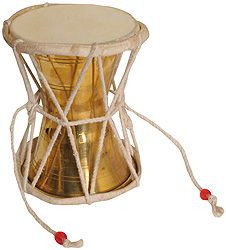
In ananda-tandava imagery Shiva carried a damaru – double drum suggestive of sound – an essential component of ananda-tandava.
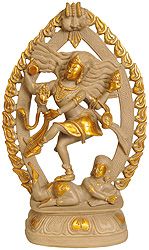
Ananda-tandava conceived Shiva’s image with flames of fire bursting from one of his palms and as running through entire cosmos – symbolized in Shaivite imagery in the form of a fire-arch.
Similarly, assurance, freedom from fear, release … are revealed in the gestures of Shiva’s hands. It was in ‘ananda-tandava’ that the fivefold activity – creating, maintaining, veiling, unveiling, and destroying, and the six celestial ‘bhavas’: ‘shrishti’ – creation; ‘sanhara’ – dissolution; ‘vidya’ – knowledge; ‘avidya’ – ignorance; ‘gati’ – motion; and ‘agati’ – inertness, revealed. ‘Ananda-tandava’, thus, encompassed the entire cosmos and its phenomenal existence.
Informal image
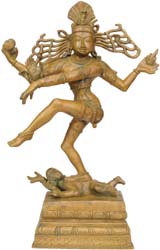
In almost all manifestations Shiva’s images are informal though in a dance form such aspect is best revealed. In a dance form the impassioned Shiva is as a rule portrayed as passionately engaged in it each body-part involving in its ecstasy. Unfurling locks of hair and his snakes floating into space portray the dynamics of the act. Usually he his right leg planted on the figure of Apasmarapurusha, and the left, turned to the right and shot with sublime force into the space.

Shiva is usually a figure with normal two arms 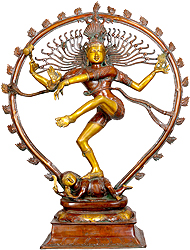 though his images portraying him as engaged in dance are often four-armed. Besides the normal right and left hands held in ‘abhay’and ‘varad’, the upper right hand carries a double-drum, and the upper left, a flame of fire. The term Nataraja, composed of’Nata’ and ’Raja’ literally means ’king’ of ’natas’. However, in its width the term ‘nata’, an ’acrobat’, means stage-performer. Thus, Nataraja means king of stage-performers or dancers. Shiva danced to destroy and to create or to delight, but containing unruly motion and to make it the instrument of expressing ‘bhavas’, an impulse that required him to teach it to others, also made him the ever first teacher – ‘Adiguru’ of dance.
though his images portraying him as engaged in dance are often four-armed. Besides the normal right and left hands held in ‘abhay’and ‘varad’, the upper right hand carries a double-drum, and the upper left, a flame of fire. The term Nataraja, composed of’Nata’ and ’Raja’ literally means ’king’ of ’natas’. However, in its width the term ‘nata’, an ’acrobat’, means stage-performer. Thus, Nataraja means king of stage-performers or dancers. Shiva danced to destroy and to create or to delight, but containing unruly motion and to make it the instrument of expressing ‘bhavas’, an impulse that required him to teach it to others, also made him the ever first teacher – ‘Adiguru’ of dance.
Some other significant image forms of Shiva in dance
Later, Shiva was celebrated also as Nratya Dakshinamurti – one who is ‘daksha’ or expert in dance and also as Natesh. Though the terms Natesh and Nratya Dakshinamurti had greater breadth for these terms also included ‘lasya’, besides ‘tandava’, his form that the term Nataraja denoted is largely rigidified, has a better defined iconography and in common perception is seen as better representing Shiva in ‘Ananda-tandava’ – the dance of dissolution. Various forms of Apasamarapurusha – as variously decoded by Shaivite thinkers, present also some variants of this form. Though ruthlessly trampled under the feet in most cases the image of Apasamarapurusha lies well contented as if awaiting the end of the dance and complete dissolution of the cosmos for after the dissolution is absolute its reign – the reign of inertness, begins. Sometimes Apasamarapurusha is thoughtfully inclined as if meditating on how it shall act after dissolution has taken place, and sometimes carries a flower or some object assuring that soon the process of re-creation shall begin.


